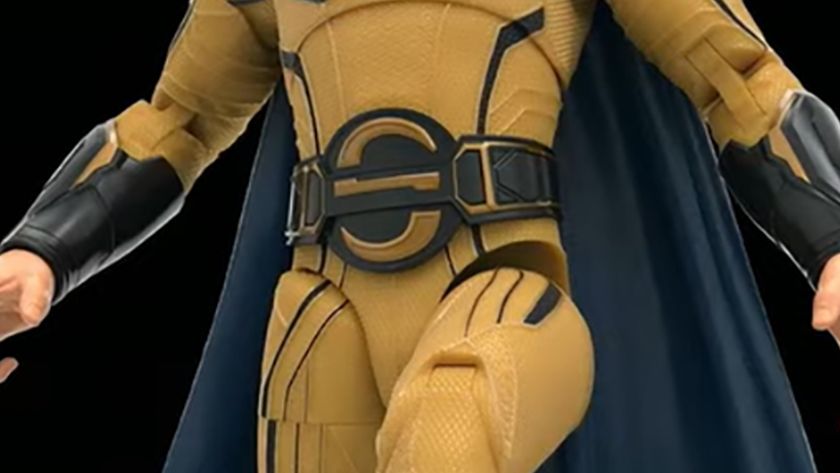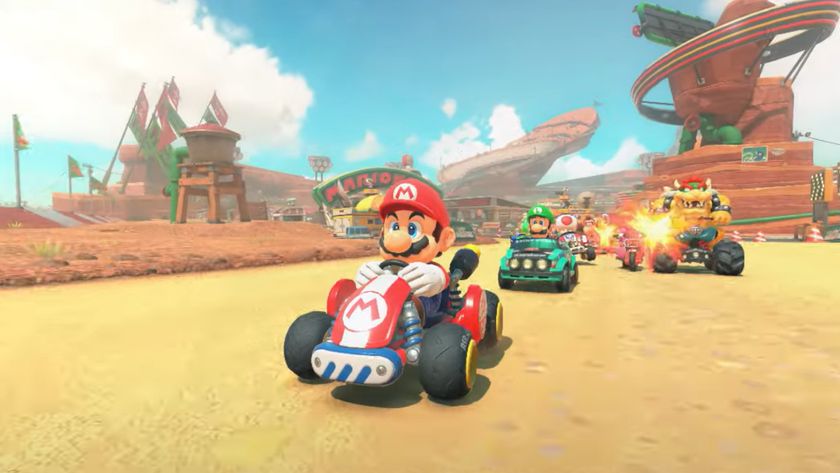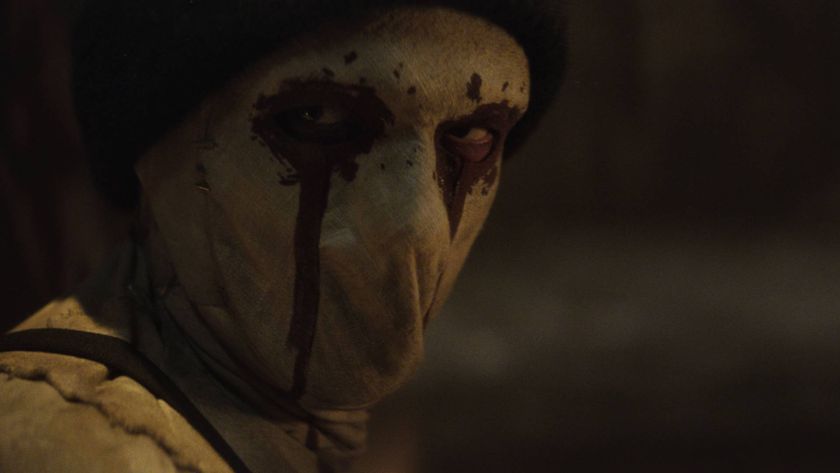Captain America's shield - the origins and history of the iconic Marvel symbol
Here are the answers to all your frequently asked questions about Captain America's shield
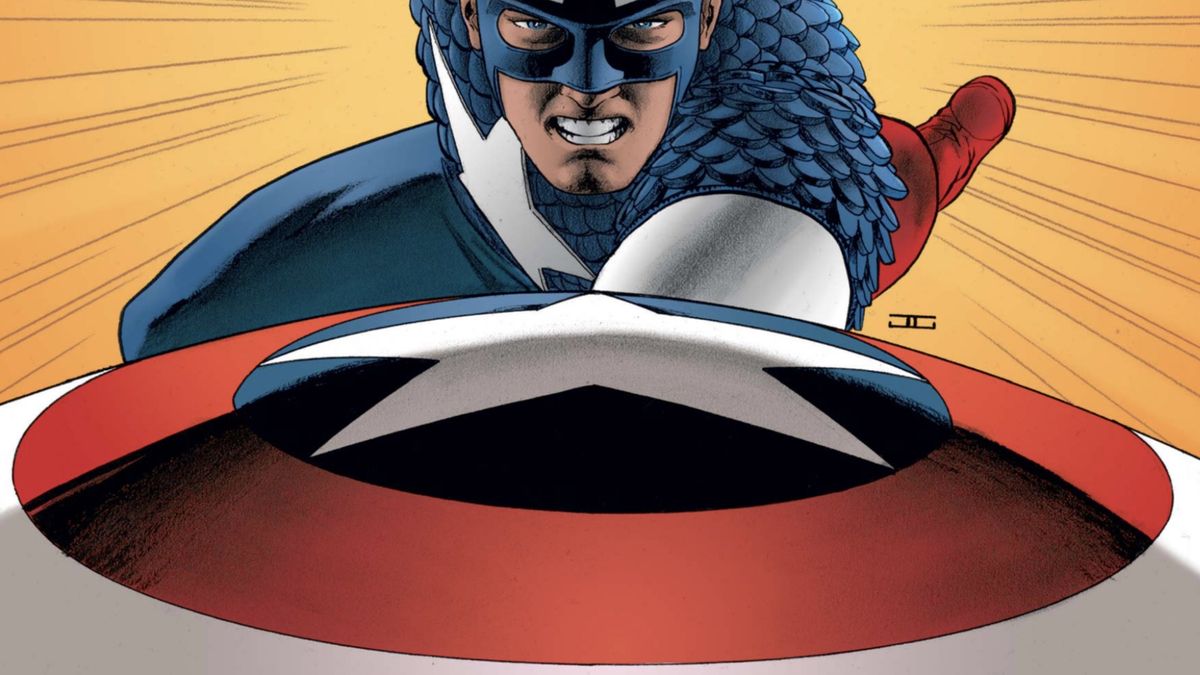
Did you ever hold a metal garbage pail lid like Captain America's iconic shield when you were a kid?
For those of you old enough to remember metal garbage pail lids, that is.
If you're anything like me - a comic book fanatic and reader since my father first put them in my hands - you probably spent your childhood looking for ways to play as your favorite superheroes, down to making your own versions of your favorite superhero gear.
What kid hasn't worn a towel as a Superman cape? And the garbage pail thing must be universal enough that Marvel Studios actually gave a nod to the right of passage in Captain America: The First Avenger when pre-Super Soldier Steve Rogers fights a bully in an alley.
When it comes to superhero gear, there's nothing more immediately iconic than the round, indestructible, star-spangled shield of Captain America, which has its own storied history in the Marvel comic book universe with a legacy almost as impervious as the shield itself.
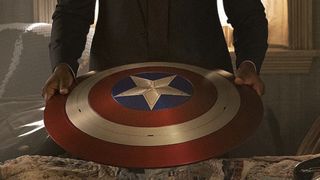
The shield played a prominent role in the MCU in Disney Plus' The Falcon and the Winter Soldier earlier in 2021, and then again in What If…? which introduced MCU fans to Captain Carter, a Multiverse version of Peggy Carter who becomes the Super-Soldier in Steve Rogers' place.
The shield was repainted of course from Stars and Stripes to a Union Jack theme reflecting Peggy's background, but it was still the same shield nevertheless.
Comic deals, prizes and latest news
Get the best comic news, insights, opinions, analysis and more!
And there are rumors of the Captain Carter character returning in live-action in next May's Doctor Strange in the Multiverse of Madness, rumors that are going to get a boost with the announcement by Marvel Comics the character will star in her own series beginning in March.
And while the shield has been passed around to different characters and appeared in different realities, one curious thing about it is that the version of the shield most of us know from comic books and movies isn't actually Captain America's first shield.
That's just one fact from the sometimes surprising history of Captain America's shield that includes answers to questions like "what is Captain America's shield made of?" "Can Captain America's shield be destroyed?" And of course, "how many versions of Captain America's shield are there?"
All of those answers follow, and they just might surprise you.
Where did Captain America's shield come from?
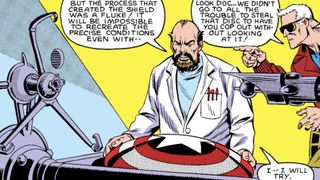
Even though Cap's shield has been part of his persona since his first appearance, the origins of the shield itself were a mystery for many years after his debut. In fact, the nature of his shield wasn't fully explored until the late '80s in Captain America #303, over 40 years after it was first seen on the page.
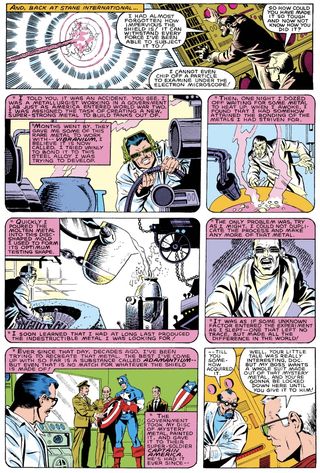
Captain America's shield - the indestructible, round shield that has become his signature accessory - was created by a scientist named Dr. Myron McClain, a metallurgist who was enlisted by the United States military to create an indestructible metal for use on armored war vehicles.
McClain succeeded - partially. Though he was unable to create 'true Adamantium,' a substance he would later master allowing it to be used to coat Wolverine's skeleton (Ultron makes his bodies out of Adamantium too), McClain managed to accidentally synthesize steel with an unknown metal (later identified as Wakandan Vibranium) to create a small amount of material with the desired weight and hardness of the metal he was hired to create.
The metal was first used to attempt to mold vehicle parts, but it was quickly turned into the shield we know today - but it wasn't Cap's first shield
How did Captain America get his shield?
Insert quote here
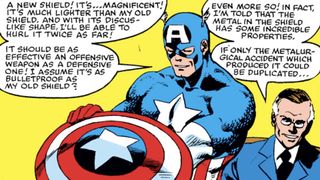
Cap's original shield was significantly different from the one he's carried most of his career. He started out wielding a triangular shield made of a more standard metal. Though it had its uses, it was hardly versatile, and definitely didn't have the properties of the most famous iteration of Captain America's shield.
In Cap's original '40s comic books, the shield only lasted a single issue till it was redesigned in Captain America Comics #2. The following issue featured a prose story which featured the first instance of Cap hurling the shield like a discus - a story written by none other than Stan Lee, who would later revive Captain America in the '60s in the pages of Avengers #4, in his first-ever comic book work.
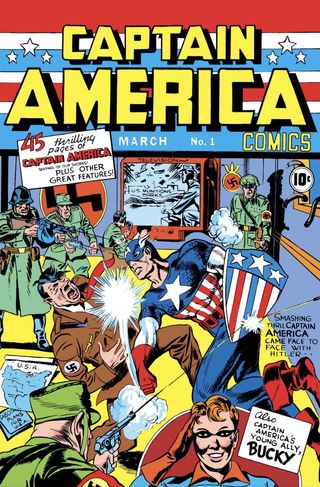
Following several high profile adventures in which Steve Rogers managed to defeat some important Nazis and rescue many American troops wearing only his standard costume and carrying his original shield (similar to how he started out in the movie Captain America: The First Avenger), President Franklin Delano Roosevelt had the military outfit Steve with a new, armored Cap uniform, and personally awarded him his most iconic shield made of McClain's unique alloy, as shown in Captain America #255.
Steve carried the shield until the day he - and it - were frozen in arctic ice in the waning days of WWII. When he was unfrozen by the Avengers, Tony Stark added some special mechanical adaptations to the shield, such as a magnet that would return it to Cap's gauntlet no matter how far he threw it - though Steve quickly eschewed the new gimmicks in favor of the classic simplicity of his plain old shield.
Has Captain America's shield ever been destroyed?
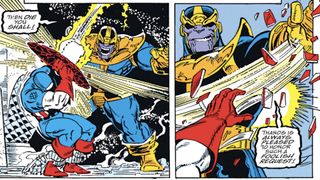
Captain America's shield is usually described as indestructible - and for the most part, its fabled toughness has held true … "for the most part" being the key phrase there.
In early depictions of Cap's time with the Avengers, the indestructibility of his shield wasn't so cut-and-dry, as it would often be damaged or even destroyed. These instances were explained away as having actually been replica shields that were destroyed while Tony Stark was holding onto Cap's actual shield to test its unique metallic properties.
But years later, Thor actually dented the shield with his hammer while he, Cap, and Iron Man were tussling - but he also pounded the dent back out after he calmed down.
The first time Captain America's shield was actually destroyed was in Avengers #215, in which the Molecule Man disassembled - and then reassembled - it at the atomic level. Then, in the 1985 event title Marvel Super Heroes Secret Wars, Doctor Doom broke the shield while he was imbued with tremendous cosmic strength - though that same cosmic power allowed Steve to wish the shield whole again at the story's end.
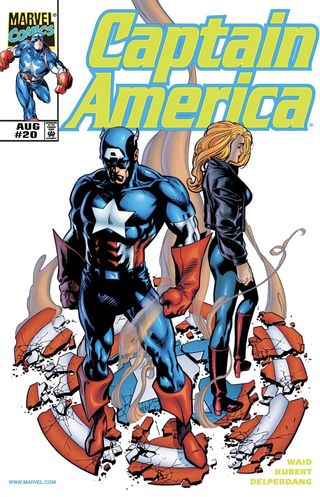
Much like in Avengers: Endgame, Thanos managed to punch the shield apart in the story Infinity Gauntlet - though Nebula later used the power of the Gauntlet to undo Thanos' destruction, including restoring the shield.
Cap's shield was once destroyed so thoroughly that it actually nearly destroyed all the Vibranium on Earth. How? Well, as it turns out, the shield had a tiny molecular imperfection which was exacerbated when the shield sank to the bottom of the ocean for months.
After it was retrieved, it shattered - and released a shockwave of a unique frequency that threatened to destabilize even the Great Vibranium Mound of Wakanda. The Vibranium was saved, and the shield itself restored when the villainous Klaw redirected the shockwave back at the assembled shards.
The last time Cap's main shield was destroyed was during the event crossover Fear Itself, in which the Asgardian god of fear known as the Serpent smashed it. Tony Stark managed to reforge the shield in the forges of the Dwarven realm of Nidavellir, patching it with the same Asgardian Uru metal that Thor's hammer is made of - though this process left a slight scar across the face of the shield.
Who has carried Captain America's shield?
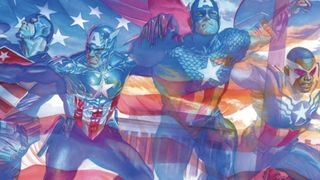
Though it now shares some of the same metal as Thor's hammer Mjolnir, Cap's shield doesn't bear the same limitation on who gets to hold it. In fact, all it really takes to wield Cap's shield is to pick it up - though that won't confer the ability to use it with skill and grace, of course.
To wit, there have actually been quite a few people to carry the shield, though not all of them have actually served as Captain America - and not all Captain Americas have used the classic, one-of-a-kind shield.
When it comes to the classic shield, there are four main wielders. Naturally, there's Steve Rogers, the original wielder of the shield and the original Cap. In the late '80s, Steve was replaced as Captain America when he began questioning his orders from the government, with John Walker (the future US Agent) taking up the mantle and the shield, though both were eventually returned to Steve.
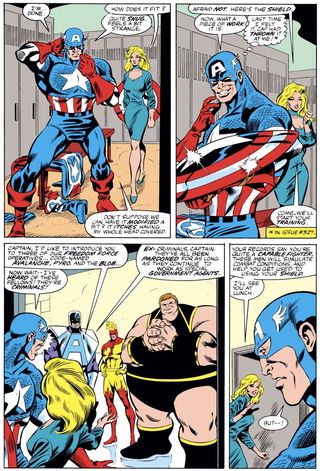
Later, following the event story Civil War, when Steve was believed dead, his protégé Bucky Barnes became Cap, wielding the shield until his own apparent death in the story Fear Itself, after which Steve became Captain America again.
Steve retired one more time when the Super-Soldier Serum in his body was neutralized. He passed the identity and shield onto Sam Wilson, his partner the Falcon, much like Steve and Sam's story in Avengers: Endgame and The Falcon and the Winter Soldier.
All four of the main Captain Americas are currently on the hunt for the stolen shield in the limited series The United States of Captain America, which also introduces five new heroes inspired by Cap's legacy, some of whom carry shields of their own.
We're just scratching the surface of the numerous people to carry Cap's shield here, so be sure to read up on our list of the best heroes to wield Captain America's shield for a more complete history of those who have carried it.
How many shields has Captain America had?
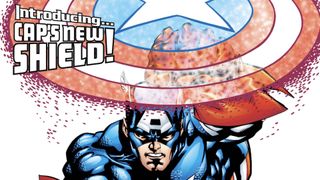
As we've established, Cap's classic shield isn't his original - that honor goes to the steel, triangular shield he carried in 1941's Captain America Comics #1. In continuity terms, Steve still owned the triangle shield for years after he used it, occasionally pulling it out when he needed a substitute for the main one.
After WWII, when Steve Rogers and his shield were frozen in ice, a separate shield was created of a different alloy, with a slightly different look. This shield was wielded by the replacement Captain Americas who filled in while Steve was frozen (check out our link above for more info on that).
Following Steve's rescue from the ice, as we previously mentioned, there were many times in Cap's early Avengers days when Tony Stark took his unique shield for testing while offering him a series of temporary steel replacements. He's also had a few more shields of different experimental alloys, most of which were used only briefly.
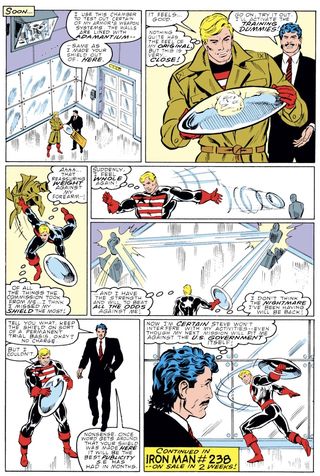
Later, when the Captain America identity and shield were given to John Walker, Steve took up the identity of The Captain, with Stark forging him a pure Adamantium shield as a replacement. Following the story Armor Wars, Stark and Cap had a falling out, with Steve returning the shield in favor of a pure Vibranium shield made by Black Panther.
The Vibranium shield was eventually wielded by Walker as US Agent. Walker has had a number of his own variant shields over the years since.
Likewise, numerous other heroes have carried shields inspired by Cap's - probably too many to list them all out - to the point where the shield itself has become a kind of shorthand symbol for a hero meant to represent a nation, both in comics and other media.
When Steve's shield was lost on the bottom of the ocean, Steve used an energy shield which was projected from a wristband under his gauntlet, which he's brought back a few times over the years.
And finally, when Steve Rogers returned from his retirement after passing his classic shield to Sam Wilson, he used a new triangle shield which could actually split into two smaller buckler-type shields, one on each arm. This shield was only around for a little while, as Steve had secretly been subverted by Hydra at the time. When he was restored, Sam gave him back his classic shield - which he's still wielding as Captain America in current comic books.
How is Captain America's shield different in the MCU and in Marvel Comics?
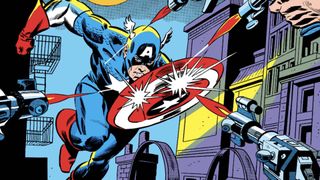
The biggest difference between Captain America's shield in movies and comic books is its origin. Though the way Cap got the shield is fairly similar in both media - it was awarded to him after he was put into active field service to protect him and give him a unique weapon - it was created by different people, in different ways.
In comics, the classic shield was created by Myron McClain who managed to smelt Vibranium with steel through unknown circumstances. In movies, the shield is pure Vibranium and was made by Howard Stark. Though Howard's son Tony would go on to work on Cap's shield in comic books, and even create him some alternate shields, the Stark family wasn't involved in the shield's comic book creation.
The other big difference is, in comic books, Cap has often switched up his shield or wielded a variety of different shields at different times. In the MCU, while it's sometimes had different paint jobs, there's just the one actual shield - though Spider-Man: Homecoming does mention a prototype shield created by Tony Stark, perhaps referring to the partially constructed shield seen as an Easter egg in Iron Man 2.
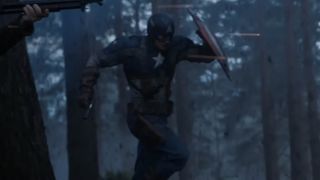
In terms of the properties of the shield in movies and comics, it's pretty much the same in both cases. The Marvel Cinematic Universe version's Vibranium properties are more explicitly spelled out, including the shield's ability to absorb and redirect kinetic force.
But the comic book version does all the same things, down to deflecting attacks of tremendous force, bouncing from target to target when thrown correctly, and returning like a boomerang off the perfect curve.
So there you have it - everything you ever wanted to know about Captain America's shield - and probably a whole lot more history of the shield and its place in the Marvel Universe than may seem possible for such a simple object.
But it's the shield's simplicity, both as a tool and as iconography, that makes it such a powerful, recognizable symbol of Captain America, and of the heroic archetype he represents.
Cap has wielded his shield in pretty much all of the best Captain America stories in comic books.
I've been Newsarama's resident Marvel Comics expert and general comic book historian since 2011. I've also been the on-site reporter at most major comic conventions such as Comic-Con International: San Diego, New York Comic Con, and C2E2. Outside of comic journalism, I am the artist of many weird pictures, and the guitarist of many heavy riffs. (They/Them)


